China has a long history with engineering projects and infrastructure investments. Only in Q1 2023, more than 10,000 construction projects were launched in the country, reaching a combined investment of 7 trillion RMB. From colossal power plants to bullet trains and bridges almost as tall as two Eiffel towers, since the early 2000s the Chinese government started to finance these megaprojects; the purposes of these ambitious endeavors were both to boost the economy and to provide people with the latest, most technological advanced facilities, as well as offering an ever-increasing number of jobs.
Read our report on the future of sustainable fashion

Beipanjiang Bridge
Opened in 2016, the Beipanjiang bridge (also known as the Duge Bridge, named after the nearby village where construction began) still holds the title as the world’s highest bridge. This architectural marvel spans between Guizhou and the Yunnan regions and consists in a 1.3 kilometers 4-laned highway which is part of the long route connecting the city of Hangzhou, near Shanghai, to Myanmar, on Tibet’s border. The project is an absolute engineering masterpiece: the height of the bridge towers are respectively 269 meters for the Guizhou side, and 247 for the Yunnan side. The history of the bridge started in 2012, when the Ministry of Transport of China established the “Duge bridge scientific research project”. However, construction works started in 2013 through a collaboration between the two provinces of Zhejiang and Yunnan. Just three years and a billion RMB later, in 2016, the bridge was finally built, and officially opened to traffic on 29th December of the same year. The purpose of the bridge is to enhance the connectivity between the two regions. Before the Beipanjiang bridge existed, the travelling time between the two cities of Xuanwei and Liupanshui (under the Shuicheng county), respectively in Yunnan and Guizhou, was up to 4 hours. After 2016, it was reduced by three hours, enabling cars and trucks to go from one city to another in approximately 60 minutes.
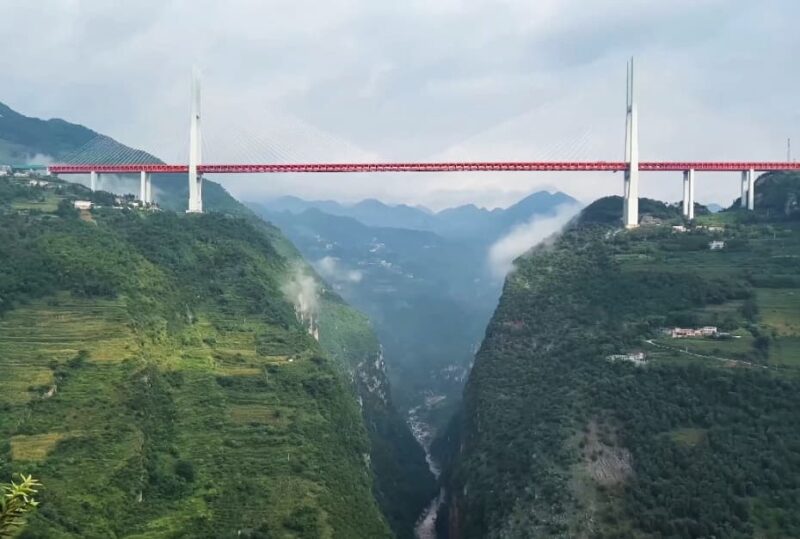
Xiong’an new area
The Xiong’an New Area or “雄安新区” (Xióng’ān Xīnqū) is a new city situated 100 kilometres south of Beijing, it would be an enormous eco-friendly complex created to lower the problem of Beijing traffic. Designed to become the center of the Jing-Jin-Ji region, the Xiong’an New Area is envisioned as a sustainable and futuristic urban development. On February 23rd, 2017, the head of state Xi Jinping held a speech in the county of Anxin, where the city would have been built. A few months later, on the 1st of April 2017, the project was officially set up by the Central Committee of the Chinese Communist Party and the State Council. The city is expected to cover roughly 1,700 square kilometres and host a permanent population more than 120,000 people, it would also resolve the problems of overpopulation and traffic jams in Beijing.
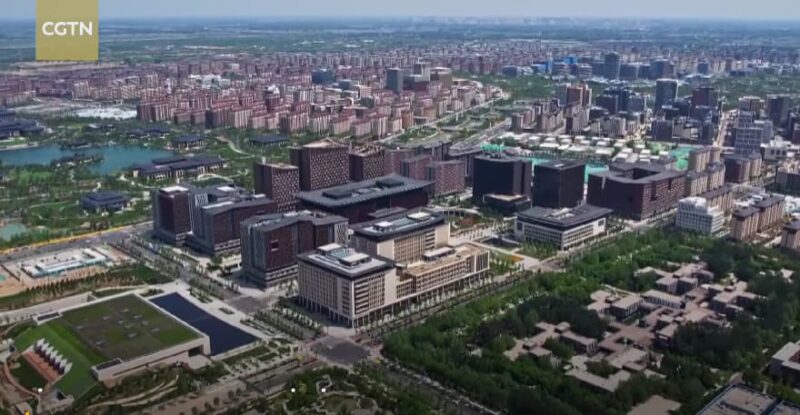
The design itself of the city will also be new, with the introduction of the “15 minutes community living circle”. According to this innovative city setup, every facility must be reachable in 15 minutes at most, this rule will be applied to everything: from schools to hospital and grocery stores. Furthermore, this Chinese megaproject will serve as a significant benchmark for all future innovations in China, aligning with Xi Jinping’s vision, as stated during the 20th party congress in 2022, where he emphasized that innovation would remain at the core of China’s modernization drive. This boost to R&D projects and innovations is further exemplified by one of the nation’s most ambitious plans for the future: “Made in China 2025”. Through this initiative, China aims to position itself as the benchmark for the other countries, becoming the exporter of innovation. After his third visit to the project’s site in July 2023, the Chinese president expressed satisfaction with the progresses achieved in six years. He affirmed that this newer, greener city will effectively address long-standing “urban illnesses” (城市病) such as pollution and traffic jams once and for all.
Kela Power Station: world’s largest hydro-photovoltaic power station
Following the objective of the world’s carbon neutrality in 2060, in 2022 China began the construction of the Kela Power Station: a 16 million square meters hydro-electric power station situated in the region of Sichuan. The project started to take life in 2016, when it was launched by the “Design and Research Institute of Power China Chengdu”, while construction work officially commenced in 2022 the constructions. The building of this megaproject represented a challenge for engineers, because the power station is situated on a mountain complex in the Yajiang county, which is 4,600 meters above sea level, so the building had to be projected to withstand storms, blizzards and every sort of weather. Despite the first difficulties, almost a year later, on the 26th of June 2023, the Kela power plant began to produce power. The Kela hydro-electric station has a one million Kilowatts capacity, and, thanks to its annual output of 2 billion Kilowatts, it will produce enough energy to satisfy the needs of approximately 700,000 households per year. The building also represents a huge turnover in Chinese economy, mainly because, according to the construction project manager Yang Zhiwei, this huge amount of energy is the equivalent of 600,000 tonnes of coal, thus it will reduce carbon dioxide emission by 1.6 million tonnes.

Bullet Train CR450: the fastest train in the world
On the 14th five-year plan, from 2021 to 2025, the China Railway 450 (CR450) innovation project was announced. The train was expected to have a cruise speed of 400 km/h and an experimental speed of 450 km/h. However, between June 28th and 29th 2023, some tests were made in the Fujian province, where the train reached a top speed of 453 km/h, more than a 100 km/h faster than the record of the previous fastest train in China. This Chinese megaproject has only been tested in a relatively small section of the Fuzhou-Xiamen high speed railway, but when it will be put into operation, it will cover the distance between Beijing and Shanghai in just 2.5 hours. Furthermore, the train also aligns with the Chinese green policy, because the train will be electrified and more energy-efficient, representing an eco-friendlier alternative to the more pollutant ways of transport, such as airplanes and cars.
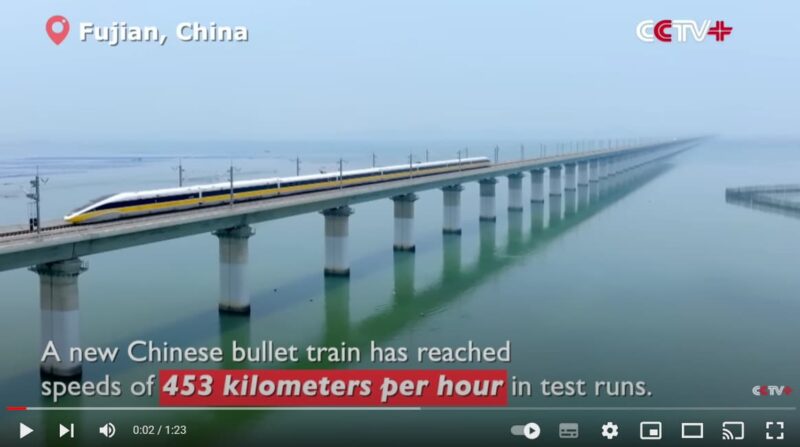
FAST radio telescope
As of 2023, the FAST radio telescope is the biggest single-dish radio scope in the world. FAST is an acronym which stands for “Five-hundred-meter Aperture Spherical radio Telescope”, and the building is situated in the Guizhou region. The constructions began in 2011, and only 5 years later it was already operational. The project was funded by the Chinese government and, as of 2023, the colossal scope is operated by the National Astronomical Observatories of the Chinese Academy of Sciences. The megaproject represents a revolution in the space exploration: since 2017, the “China sky eye”, as it was labelled, have identified over 740 pulsars, or neutron stars, and the number is ever-increasing.
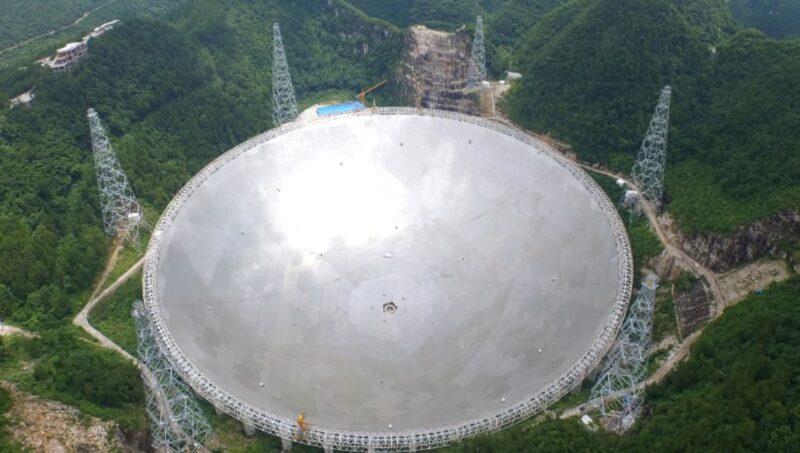
Shanghai Metro Line 11
With a length of 82.4 kilometers, the Shanghai Metro Line 11 is the world’s longest metro line, as well as the first metro line to ever cross city borders, the journey starts from Suzhou and ends up melting in the complex net of metro lines in Shanghai, with its terminal situated near Shanghai Disneyland resort. This Chinese megaproject started in August 2018, when the National Development & Reform Commission approved its construction, while the official tests without passenger have started at the beginning of March 2023. The most positive aspect about building such a long metro line is its flexibility, even because the only way to travel from Suzhou to Shanghai was by high-speed train, which follows very tight schedules. With this new metro line, people won’t worry anymore about catching the train on time, because there will be more rides and the train will complete its journey in just about 53 minutes.
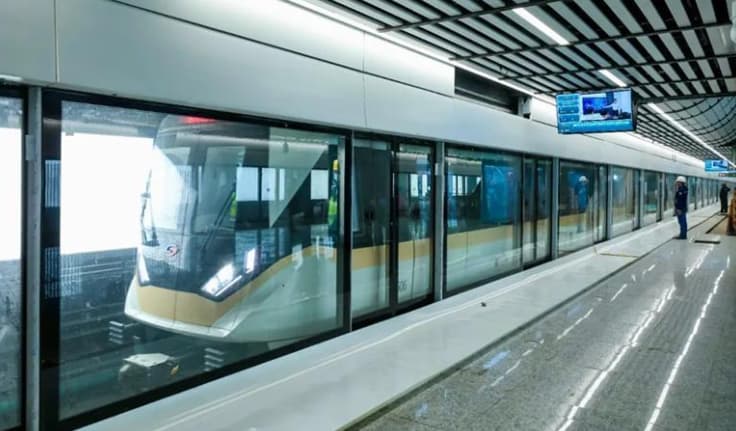
Taihu Tunnel
Measuring 10.79 kilometres long, Taihu tunnel is the world’s longest underwater tunnel. The project composes of a six-laned highway which goes underneath lake Taihu, located at just 50 kilometres east of Shanghai, and connects the cities of Shanghai and Nanjing. The tunnel’s construction began in 2018 and costed approximately 9.9 billion RMB. 3 years and 2 million cubic metres of concrete later, in December 2021, it was finally opened to the public. The construction is part of the brand new 43 kilometres long highway between the cities of Changzhou and Wuxi, opened to public the same day of the Taihu Tunnel. A daily average of 25,000 vehicles passed through the Taihu Tunnel during the first week since opening.
The project’s manager, Xiaochun Fei, and one of his colleagues stated that the tunnel was build by adhering to a “green” construction concept throughout its development and utilizing innovative approaches, so as to minimize its impact on the environment while providing efficient travel options and easy access to scenic spots for residents and visitors.
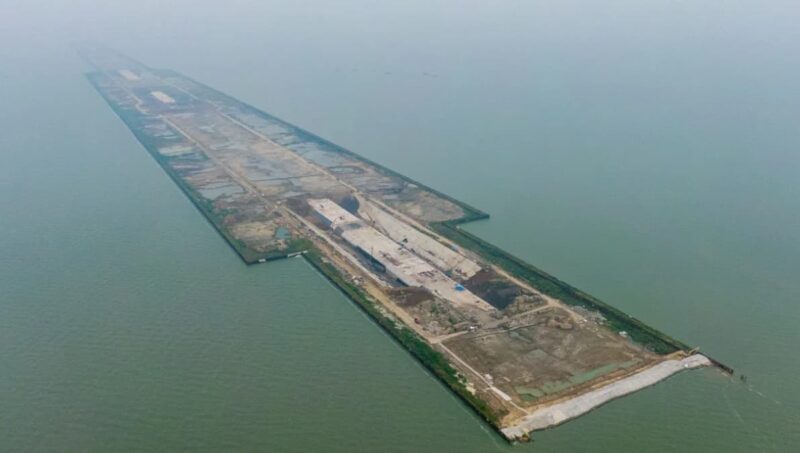
Chinese megaprojects: the country’s demonstrations of its technological development
In the last few years, China has been making significant strides in technological development. The country is home to some of the world’s largest and most impressive construction projects within their respective sectors, such as the Beipanjiang bridge, the FAST radio telescope, and the Shanghai Metro Line 11. The Chinese ambition, combined with their commitment to becoming more environmentally friendly, has driven the construction of noteworthy projects like the Xiong’an New Area and the Kela Power Station, which stands as one of the world’s largest hydro-electric plants. However, the innovations don’t stop there; China is also actively working on enhancing its transportation system by funding several projects, including the CR 450 high-speed train and the Taihu Tunnel. Starting from the early 2000s, the country has been showing real commitment in becoming one of the most technologically advanced nations in the world, and these megaprojects serve as “living” proof of their dedication.
Author: Lorenzo Linguerri




